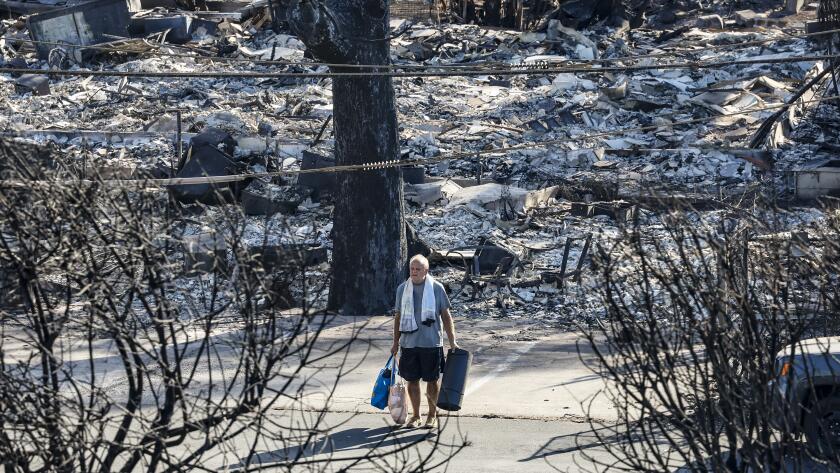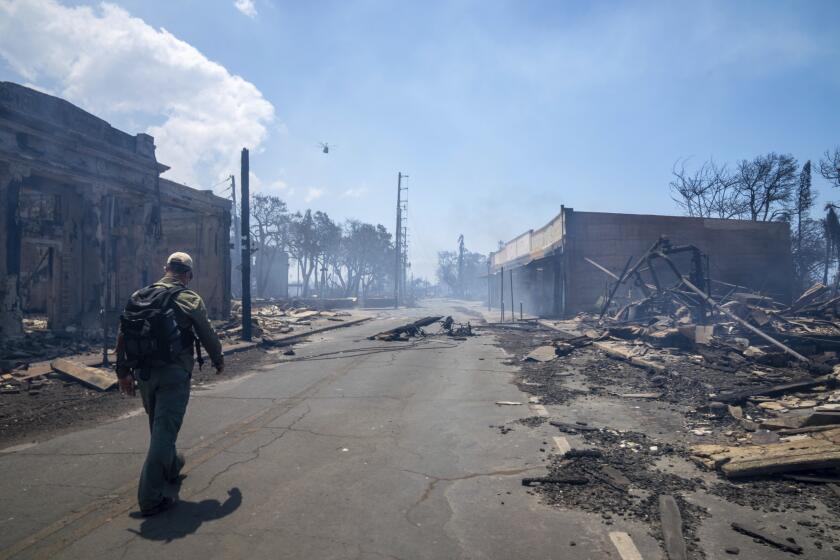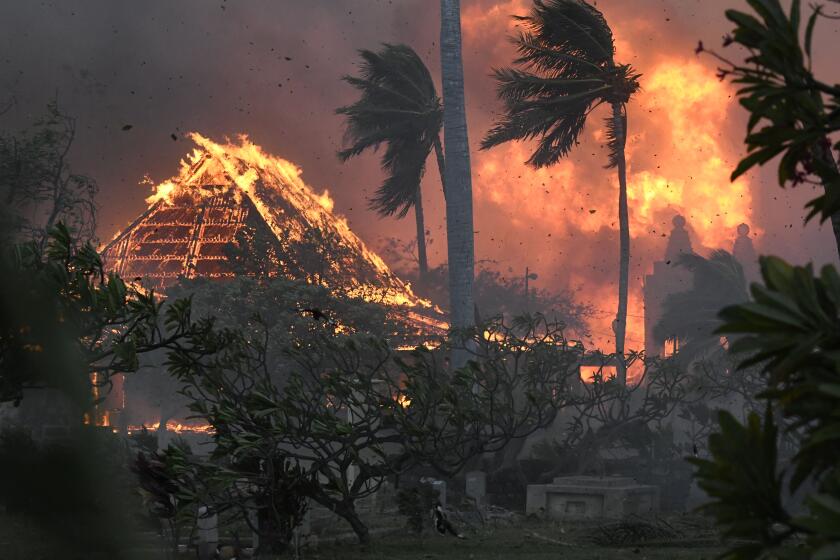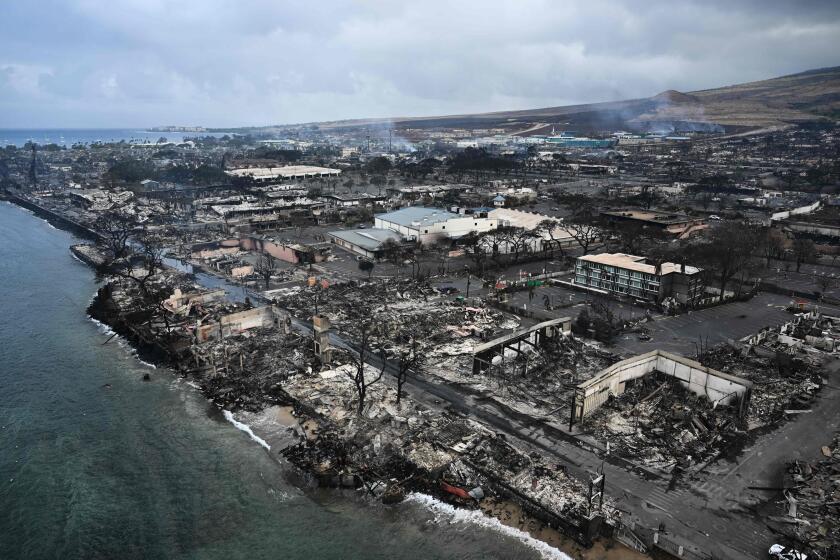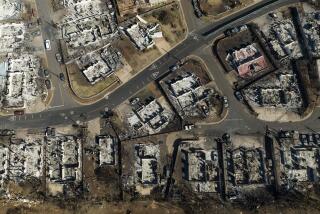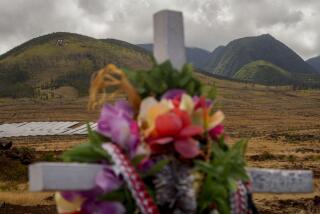Death toll in Maui fires rises to 67: ‘We have not yet searched’ buildings
- Share via
Residents of Lahaina were being allowed back home on Friday for the first time since wildfires that have killed at least 67 people turned large swaths of the centuries-old town into a hellscape of ashen rubble.
- Share via
As search-and-rescue efforts continued on Maui after a fast-moving wildfire tore through the island and killed dozens of people, residents steeled themselves to return to the historic town of Lahaina after it was left in smoldering ruins.
Maui County said those with proof of residency or hotel reservations could return to Lahaina beginning at noon Friday. A curfew from 10 p.m. to 6 a.m. was in place, and barriers restricting access to certain areas — including the historic center — were in place because of hazardous conditions.
Hawaii Gov. Josh Green told local television station KHON-2 that residents would face “destruction like they’ve not ever seen in their lives.”
“Everyone please brace themselves as they go back,” Green said.
The fire’s confirmed death toll rose to 67 as of Friday afternoon.
Green said the blaze is probably the state’s deadliest natural disaster in decades. The catastrophe spurred President Biden to declare a major disaster in Hawaii, opening the door to federal aid.
About 1,000 people are missing, according to federal sources who were not authorized to speak publicly about the fires.
A windswept fire invaded a historic town in Maui this week, setting in motion a familiar and terrifying chain of events.
The Lahaina fire, one of three that broke out Tuesday on Maui, was said to be 80% contained. Residents and tourists described harrowing efforts to escape the blaze, with some people rushing into the ocean for safety. Many did not know about the fire until they saw flames and smoke, raising questions about official alerts and warnings about the blaze.
Records indicate that neither the state nor the county activated sirens Tuesday, said Adam Weintraub, a spokesperson for the Hawaii Emergency Management Agency. Weintraub described Hawaii’s integrated outdoor siren system as the largest in the world, with about 400 sirens spread across the state. It is traditionally used in disasters and other threats, such as hurricanes or coastal hazards, to advise people to seek more information — not to call for evacuations or advise that people seek shelter — he said.
Three other public warning systems were used, Weintraub said: wireless emergency alerts to cellphones, broadcasts through radio and television stations and notifications that residents can sign up to receive through a local emergency alert system. But power outages and communication issues may have affected those alerts.
Much of the west side of Maui remained without internet, power and water Friday morning, although officials said some cellphone service was available.
Federal sources with knowledge of the fires but who were not authorized to speak publicly told The Times that a breakdown in emergency communications cost precious time, and a number of people in the historic town of Lahaina learned too late about the oncoming fire. Many of those killed were believed to have died in their vehicles, those sources said. The death toll is currently tied to the most urbanized areas, with some bodies recovered from the harbor, they said.
The Hawaiian Islands do see wildfire from time to time, but the catastrophic Maui fires were spawned by a striking mix of factors, including climate change.
In an interview on the “Today” show Friday morning, Maui County Mayor Richard Bissen Jr. said he could not “comment on whether or not the sirens sounded.” He called the fires “an impossible situation.”
“I know that fires came up so quickly and they spread so fast,” he said.
Bissen said the death toll so far reflects only those who were found outside buildings.
“We have not yet searched the interior of the buildings,” he said, adding that authorities are awaiting search help from the Federal Emergency Management Agency.
State and local agencies were assisting with search-and-rescue efforts.
Progress against the Upcountry fire, which broke out in a rural area on the island, was still being assessed. A third blaze, the Pulehu fire, was at 70% containment, officials said. Firefighters were continuing their efforts to secure the perimeters and battle all the blazes.
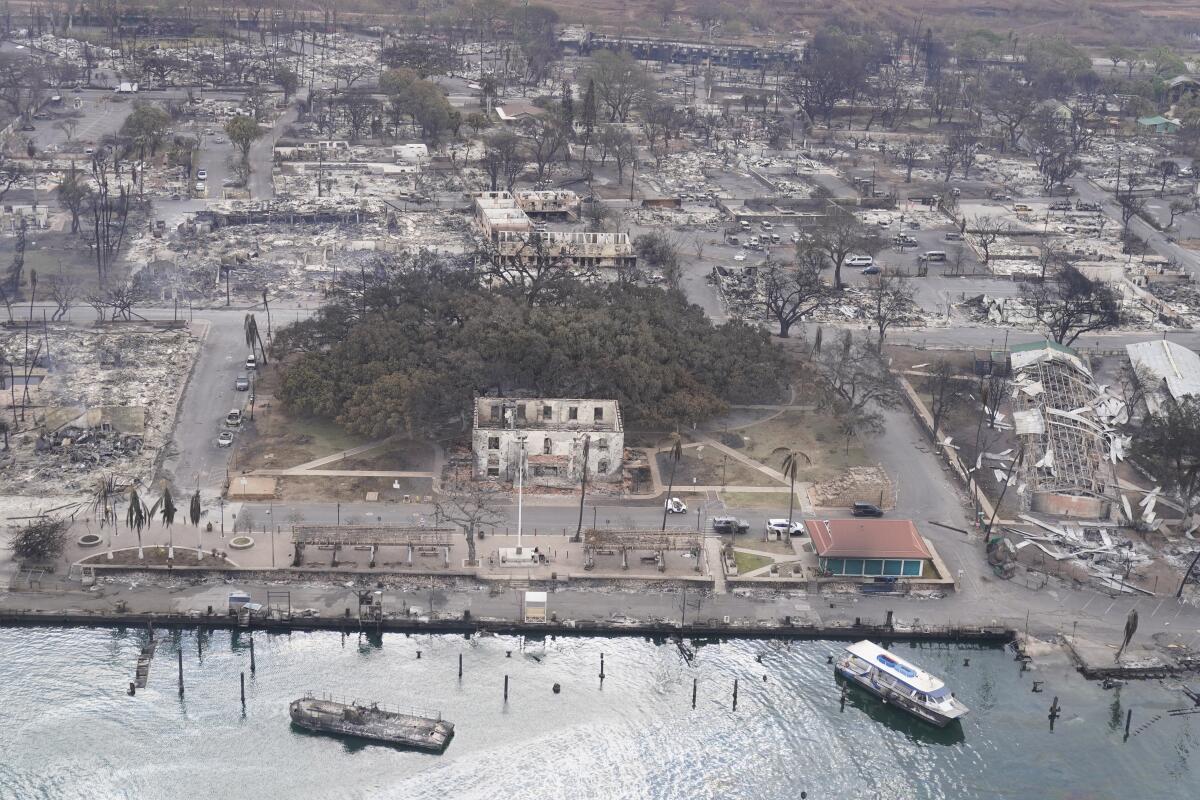
“Maybe these things happen a lot in California,” said Maui resident Andrew Kayes, “but I’ve lived here 15 years and have never seen anything like this.”
Kayes, 49, lives in Maui’s Upcountry region, where one of the fires began. He watched from his backyard Tuesday night as the blaze grew into a swell of orange flames that glowed against the black sky.
“It looked like a lava flow,” he said.
The fires overtook and closed many roads, which became congested and stranded hundreds of people as they raced to the island’s only major airport, Kahului, where tens of thousands of visitors have left on flights, officials said.
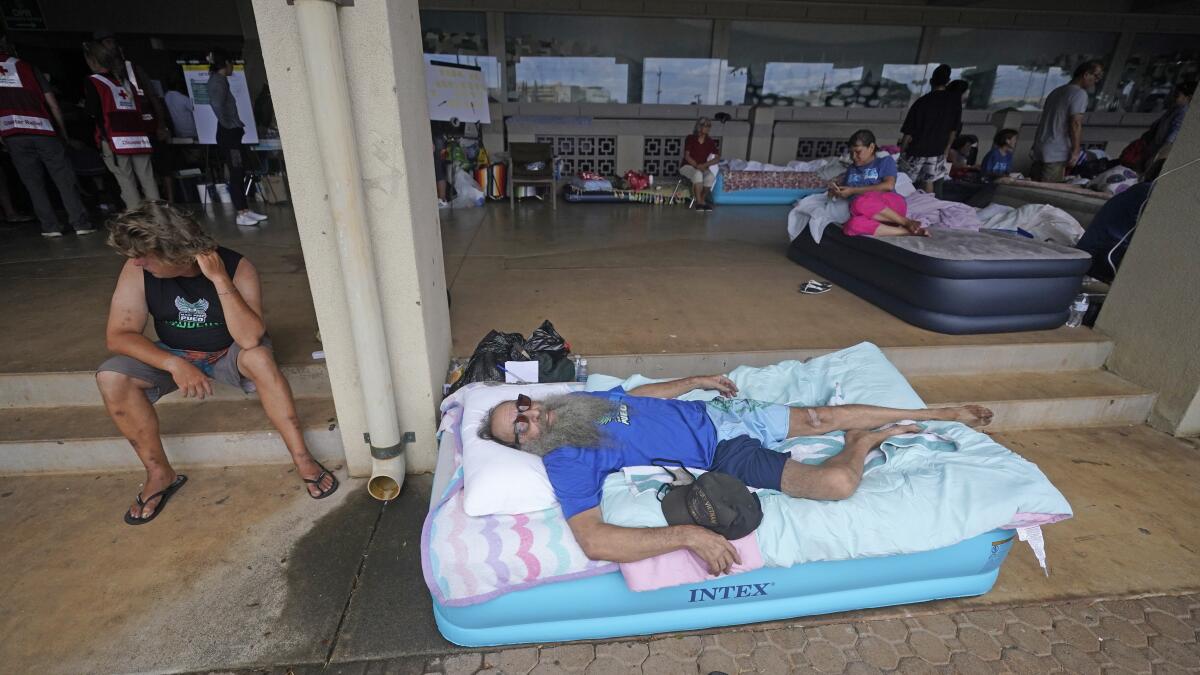
Green estimated that as many as 1,700 buildings have been destroyed in the fires, hundreds of them in Lahaina. Even some of the vessels in Lahaina Harbor were burned.
Maui’s famed Banyan Tree, a 150-year-old landmark with deep significance that is a tourist attraction on the island, was “smoldering at the base, but still standing,” Sen. Brian Schatz (D-Hawaii) wrote on Twitter.
Green had been traveling out of state but returned to Maui on Thursday to assess the damage. He said during a public briefing that he expected the cost of the recovery to be in the “billions of dollars.” Accuweather had a preliminary estimate of damage and economic loss at $8 billion to $10 billion.
Search-and-rescue teams, some equipped with cadaver dogs, from local and state agencies are assisting in the aftermath. California Gov. Gavin Newsom on Thursday deployed urban search-and-rescue personnel and other resources.
The search also unfolded online, where many turned to a spreadsheet on Google Drive to search for loved ones. By Thursday evening, the spreadsheet grew as new rows for the missing were added and loved ones marked dozens of family members as “found.” The link to the sheet repeatedly crashed because of high traffic.
Denise Youngblood Coleman, a Honokowai resident who has lived a few miles north of Lahaina for two decades, has been searching for names she recognizes on the Google spreadsheet. Coleman was in Los Angeles when the fires broke out, but said that based on satellite imagery, her home appears to be standing. She said she has not heard from two of her elderly neighbors, whom she described as her “ohana,” or family.
“They’re like my surrogate parents, and I don’t know where they are and that worries me greatly,” Coleman said. “Every person I know in Lahaina is homeless. There’s nothing left. That’s a huge thing to come to terms with.”
Although the rest of the state remains open to visitors, officials have asked nonresidents to leave Maui and urged others to avoid nonessential trips to the island.
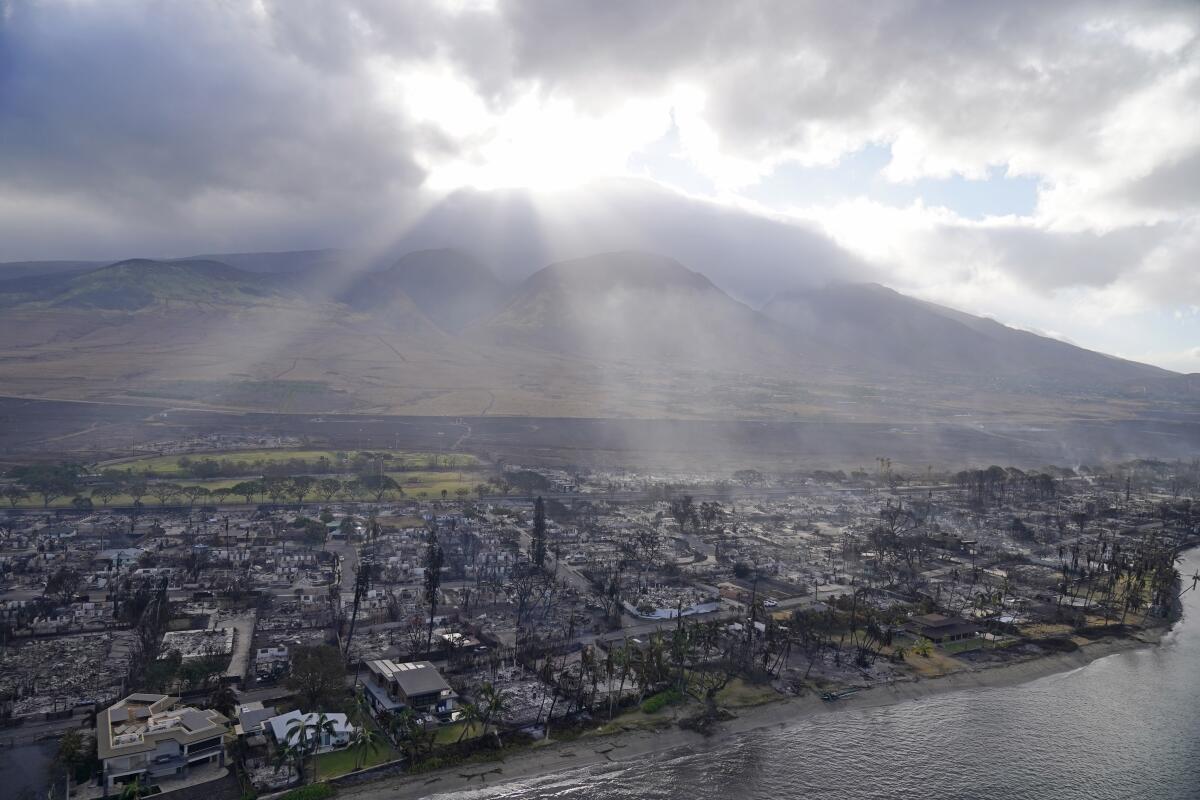
The cause of the blaze has not been determined, but a number of factors — including high winds, low humidity and dry vegetation — probably contributed, said Maj. Gen. Kenneth Hara, adjutant general for the Hawaii’s Department of Defense.
Fires across Maui have destroyed buildings and lead to at least six deaths. Photos from space show the scale of the destruction.
The weather service had issued a red flag warning ahead of the fires, indicating that warm temperatures, very low humidity and stronger winds were expected to combine to produce an increased risk of fire danger. But Hara said wind strength — forecast at 50 to 55 mph — far exceeded the predictions, reaching 85 mph.
Experts also said that climate change was increasing the likelihood of more extreme weather and that the changing landscape of unmanaged, nonnative grasslands from declining agriculture is a contributing factor to fire risks.

Jayme Gomes, a 29-year-old Wrightwood, Calif., resident whose father was born on the island and lives in Lahaina, told The Times she didn’t hear from her father until Thursday afternoon. His house had burned and he was separated from relatives during the evacuation, but he made it to the other side of the island and found a phone charger.
“It’s truly devastating,” Gomes said. “The whole town is gone. It’s not just a tourist destination. It’s home to many people.”
Gomes’ family is now staying with friends in Hawaii.
“I know that many people in Hawaii are going to help each other, because that is what aloha is,” she said. “That’s how everybody is there.”
Times staff writers Jeremy Childs and Jack Herrera contributed to this report.
More to Read
Sign up for Essential California
The most important California stories and recommendations in your inbox every morning.
You may occasionally receive promotional content from the Los Angeles Times.
